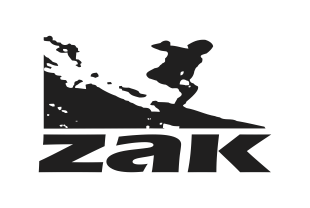The amount of rocker a board has is one of the most critical elements in surfboard design in relation to how a board will perform. Matching the right amount of curve in the right areas, nose to tail, complementing the curve of a boards outline to result in a board that surfs like you want it too, can be complex to say the least. Here I will try and break down the basic elements of surfboard rocker and how it relates to overall surfboard performance.
Some of the basic principles concerning surfboard rocker are outlined in the paragraphs below:
Generally the more rocker or bottom curve that a board has, the easier to turn & looser it will be. The trade off of having more curve is a reduction in the overall speed of the surfboard, particularly in a straight line. When you think about the way that water will flow underneath a board while you are riding it, it will have to follow any extra curve that you have added to the bottom. The more curve, the more it will end up pushing water – equaling more drag. Once on rail though a board with more rocker will draw tighter arcs and go through a turn much faster than their flatter counterparts. Boards with more rocker generally sit more comfortably under foot in steeper, larger, hollow waves where the added curve helps the board match the curve of the wave. Any added drag can also serve to help the rider to control extra speed and sit in more critical parts of the wave (ie. in and around the tube).

Flatter rockers bring more speed to a board but the trade off is a decrease in maneuverability. Flatter rockered boards are usually preferred for use in small wave board designs – where the emphasis in on getting as much speed as you can out of the weaker, slower & mushier surf. There is much less drag so a board will plane along the surface of a wave much easier than a board with more curve. The trade off is that smaller and bumpier waves usually mean that you have a much smaller canvas to draw your turns on.
As with most aspects of surfboard design, In my opinion the best option always lies in finding a happy medium. The better surfboard designs steer clear of the extreme and find an even, neutral rocker – flat enough to give the rider enough speed, but with enough curve to let the surfboard fit snugly into the curved face of the wave – allowing the rider to do draw their desired lines on a wave.
As a general rule in Victorian waves – there is a lot less steepness in the shape of the waves we get here. The long range swells (with a lot more water in them) coupled with the size of the continental shelf in Bass Strait create more tapered wave faces. The power of the wave coming from the extra amount of water in the larger period long range swells we receive – a contrast to the short range, steeper waves that East coast Australians spend most of their time surfing. As a result you find that the go to boards for Victorian waves tend to be flatter than our northern counterparts, the bigger less critical canvases generally lend themselves to flatter rockers.
I will follow up this post with a more in-depth look at the effects of nose and tail rocker in a few weeks 😉
